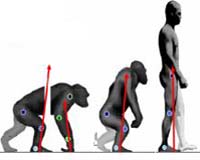| . |  |
. |
London (UPI) Mar 23, 2011 People with a rare genetic defect who are unable to feel pain also are unable to smell anything, as the same nerve protein is involved, U.S. researchers say. The discovery shows nerves that detect pain and those that detect odors rely on the same protein to transmit information to the brain, ScienceNews.org reported Wednesday. An international team of researchers examined three people who have mutations in the SCN9A gene and can't feel pain. All of them had broken multiple bones without feeling any pain, and two had given birth painlessly, but none of the three was aware they also couldn't smell a thing, the researchers said in their study published in the journal Nature. It's not unexpected that none of the people realized they lacked a sense of smell, experts said. "If this was a genetic defect from birth they wouldn't even know what they were missing," Graeme Lowe, a neurophysiologist at the Monell Chemical Senses Center in Philadelphia who was not involved in the study, said. Before this study scientists had been unaware smell and pain shared a common communication gateway. The defect is in the SCN9A gene, which makes a protein involved in sending electrical signals to the brain, which interprets them as pain. In the study, the team discovered odor-detecting nerve cells rely on the same protein. Because of the missing protein, researchers say, messages sent by both pain- and odor-sensing nerves never actually make it to the brain.
Share This Article With Planet Earth
Related Links All About Human Beings and How We Got To Be Here
 A New Evolutionary History Of Primates
A New Evolutionary History Of PrimatesWashington DC (SPX) Mar 22, 2011 A robust new phylogenetic tree resolves many long-standing issues in primate taxonomy. The genomes of living primates harbor remarkable differences in diversity and provide an intriguing context for interpreting human evolution. The phylogenetic analysis was conducted by international researchers to determine the origin, evolution, patterns of speciation, and unique features in genome dive ... read more |
|
| The content herein, unless otherwise known to be public domain, are Copyright 1995-2010 - SpaceDaily. AFP and UPI Wire Stories are copyright Agence France-Presse and United Press International. ESA Portal Reports are copyright European Space Agency. All NASA sourced material is public domain. Additional copyrights may apply in whole or part to other bona fide parties. Advertising does not imply endorsement,agreement or approval of any opinions, statements or information provided by SpaceDaily on any Web page published or hosted by SpaceDaily. Privacy Statement |